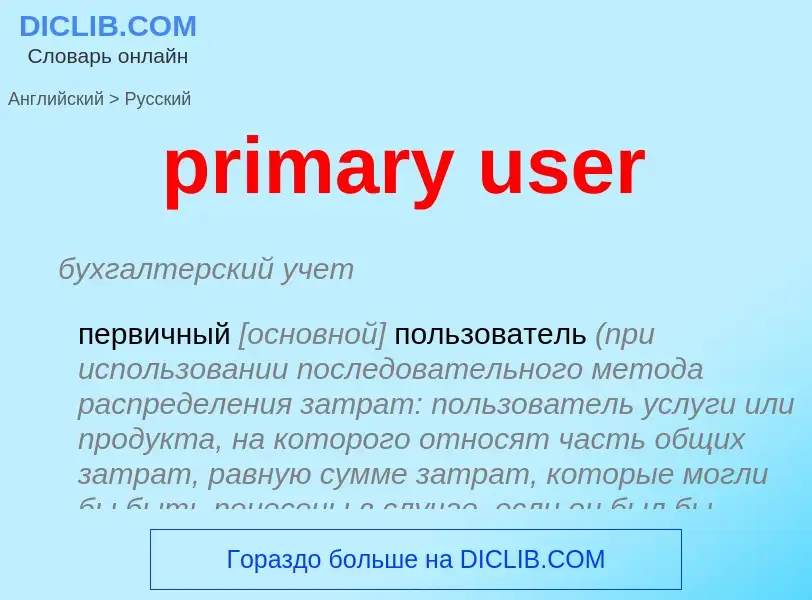Vertaling en analyse van woorden door kunstmatige intelligentie ChatGPT
Op deze pagina kunt u een gedetailleerde analyse krijgen van een woord of zin, geproduceerd met behulp van de beste kunstmatige intelligentietechnologie tot nu toe:
- hoe het woord wordt gebruikt
- gebruiksfrequentie
- het wordt vaker gebruikt in mondelinge of schriftelijke toespraken
- opties voor woordvertaling
- Gebruiksvoorbeelden (meerdere zinnen met vertaling)
- etymologie
primary user - vertaling naar Engels
бухгалтерский учет
первичный [основной] пользователь (при использовании последовательного метода распределения затрат: пользователь услуги или продукта, на которого относят часть общих затрат, равную сумме затрат, которые могли бы быть понесены в случае, если он был бы единственным пользователем этой услуги или продукта)
Смотрите также
Wikipedia
In computing, a scenario (UK: , US: ; loaned from Italian scenario (pronounced [ʃeˈnaːrjo]), from Latin scena 'scene') is a narrative of foreseeable interactions of user roles (known in the Unified Modeling Language as 'actors') and the technical system, which usually includes computer hardware and software.
A scenario has a goal, which is usually functional. A scenario describes one way that a system is used, or is envisaged to be used, in the context of an activity in a defined time-frame. The time-frame for a scenario could be (for example) a single transaction; a business operation; a day or other period; or the whole operational life of a system. Similarly the scope of a scenario could be (for example) a single system or a piece of equipment; an equipped team or a department; or an entire organization.
Scenarios are frequently used as part of the system development process. They are typically produced by usability or marketing specialists, often working in concert with end users and developers. Scenarios are written in plain language, with minimal technical details, so that stakeholders (designers, usability specialists, programmers, engineers, managers, marketing specialists, etc.) can have a common ground to focus their discussions.
Increasingly, scenarios are used directly to define the wanted behaviour of software: replacing or supplementing traditional functional requirements. Scenarios are often defined in use cases, which document alternative and overlapping ways of reaching a goal.

